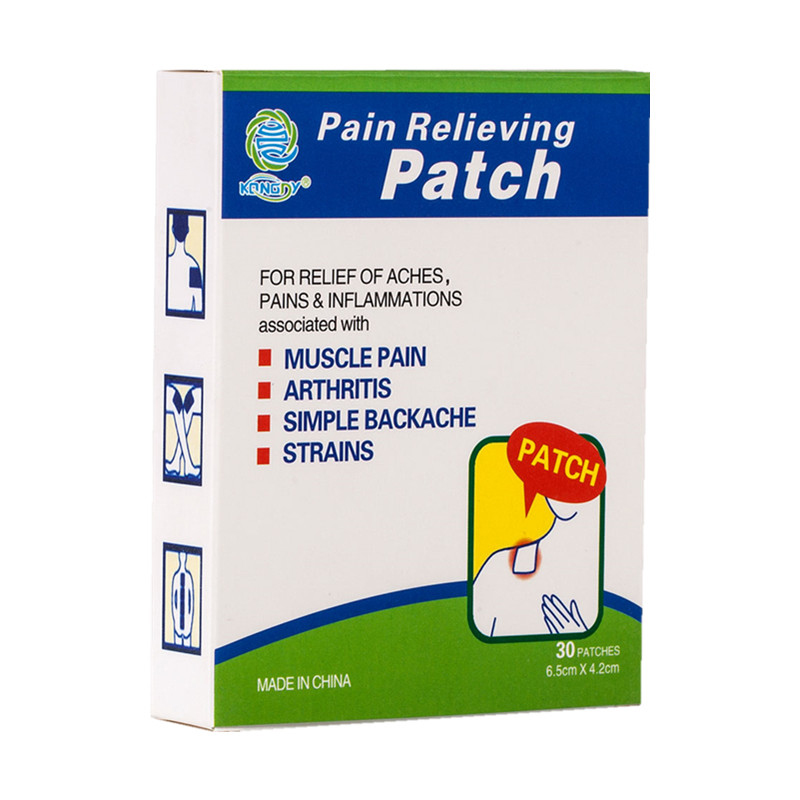Author: Kongdy Patch
Date: 04 18,2022
Tip: Before buying plaster, it is best to inform the pharmacist of your symptoms to help make a correct judgment.
①Before choosing a plaster, the cause should be clarified, and the medicine should be selected according to the symptoms;
② Before sticking, clean the skin of the affected area, and clean up relatively thick and vigorous hair, sweat stains, etc.;
③ Before sticking, you can compare the affected area and cut it, and it is not suitable to tear it repeatedly, so as to avoid loss of viscosity and affect the effect;
④Special ointments such as lump ointment and plaster need to be heated and softened before being applied. At this time, pay more attention to the temperature to avoid burns; other ordinary ointments can also be heated by pressing with hands to make them fit more tightly;
⑤ It can be attached to the folds, cervical vertebrae and shoulder joints, etc., and can be opened in the middle or on both sides to better conform to the contours of the human body;
⑥ It is not advisable to use brute force to remove the plaster, so as not to hurt the skin, you can use warm water or a hot towel to apply it for a while, and remove it along the direction of hair growth. During the removal process, you can also apply some talcum powder, prickly heat powder, olive oil, etc., which can help the tearing go more smoothly.
The plaster is applied for about 10 minutes. If there are pimples, blisters and severe itching on the local skin, it means that the skin is allergic to the plaster, and the application should be stopped immediately, and anti-allergic treatment should be carried out if necessary;
Generally speaking, if the skin is red, swollen and blistered after applying the plaster, try not to puncture the blisters and wait for them to heal on their own.
①People with allergies should use it with caution
The medicinal materials used to make the plaster may contain ginger, cinnamon, white mustard seeds, ephedra and other hairy drugs, which may cause skin allergies.
For people with allergies, it is recommended to cut a small piece of the plaster and try it for a few minutes before use. If you have allergies during the trial, it is recommended not to use it.
②Pregnant women and menstruating women should be used with caution
The ingredients contain musk, frankincense, safflower, peach kernel and other plaster with the effect of promoting blood circulation and removing blood stasis. Pregnant women and menstruating women should try not to use it. For plaster with other ingredients, it is also recommended to consult a doctor before use.
③Do not use in gout patients
If the joint pain is caused by gout, sticking a plaster will not relieve the pain, but may be counterproductive. Because the plaster can irritate the skin, aggravate local congestion, and then aggravate the pain.
④Do not use for skin ulceration
It should not be applied when the affected area is red, swollen and ulcerated to avoid purulent infection.
A survey also pointed out that each person uses an average of 6 sore patches per month. However, there are many reasons for soreness. Some soreness can be relieved by herbal pain plaster, and some are not applicable.
For example, many office workers often complain of back pain after a long day of sitting. This kind of pain is usually caused by poor posture when sitting for a long time, coupled with the lack of exercise muscle endurance and insufficient support for the body. Or, elderly people are prone to muscle soreness due to spinal degeneration and insufficient stability, coupled with muscle loss and insufficient muscle endurance, the body cannot effectively support the lumbar spine.
For this type of soreness, the herbal pain plaster may not be effective. The cause of the pain must be identified first, and the problem of structural and nerve compression should be ruled out first. Moreover, most of these problems are related to insufficient muscle strength. The fundamental solution is to exercise more and re-exercise muscle strength; whether it is aerobic exercise such as running, swimming, playing ball, etc., it is a good choice. She suggested that it can also be matched with moderate weight Training, exercise abdominal psoas endurance, increase muscle mass. Once the muscles can effectively support the body, pay attention to maintaining a correct sitting posture and avoid sitting for a long time. After a long time, the soreness can be gradually relieved.
If the pain is caused by muscle fatigue, tendon inflammation, acute strain, etc., herbal pain plaster can indeed be used as an adjuvant treatment option.
